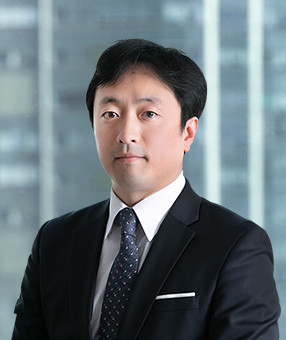On March 13, 2025, the IP High Court rendered a decision in a patent infringement case, awarding damages based not only on the patented product itself but also on related components deemed functionally inseparable. This decision is significant as it was the first time the IP High Court included functionally related components in calculating damages, setting an important precedent for future cases. This decision is final and conclusive as neither party appealed the IP High Court's decision.
Background
In this case, the plaintiff filed an infringement action against the defendant before Seoul Central District Court based on two patents related to a joint kit connecting two bus ducts. A bus duct is a system for distributing electrical power as an alternative to traditional cable and conduit systems. The plaintiff's joint kit mechanically and electrically connects two bus ducts. The plaintiff sought both injunctive relief and monetary damages.
The district court issued a decision in favor of the plaintiff based on the finding that (i) the defendant's infringement of the patented joint kit impacted the sale of the patentee's bus duct and (ii) the installation services constituted an act of practicing the patented joint kit.
While the IP High Court affirmed, ordering the defendant to destroy all infringing joint kit products and awarding damages of KRW 1.5 billion, it developed a more systematic and refined legal criteria that can be applied to future cases involving functionally related components or services.
IP High Court Review and Damages Calculation
The main question in the case on appeal before the IP High Court was whether functionally related components should also be part of the patent infringement damages calculations. So far, the IP High Court had not answered this question in the affirmative. For this determination, the IP High Court applied the following criteria:
- Whether a functionally related component should be included as an exception rather than the norm in the damages calculation;
- A component cannot qualify as functionally related merely because it is sold or assembled by the same entity for marketing or transactional convenience;
- A component qualifies as functionally related if it is an integral part necessary for achieving the goals of the patented product; and
- It must be reasonably foreseeable – considering factors such as market share, the status of competitors, the availability of alternatives, and the prevailing forms of transactions – that the patent holder would have made sales of the functionally related component but for the patent infringement.
In light of the above criteria, the joint kit and the bus duct were treated essentially as a single product, forming an integrated package for the purpose of safely supplying electricity in buildings. Both components are installed simultaneously by the same installer, and both the plaintiff and the defendant – who are direct competitors in this field – have sold and installed these products in the same manner. Therefore, the IP High Court recognized damages suffered by the plaintiff with respect to the bus duct (as a functionally related component) and installation services (as a functionally related service) caused by the defendant's infringing act.
For calculation of damages, the plaintiff requested damages to be based on its lost profits under former Patent Act, Article 128, Paragraphs 2 and 3. However, the IP High Court found these provisions to be inapplicable to functionally related products and instead ruled that the amount of profits gained by the infringer is presumed to be the amount of damages suffered by the patent holder according to Article 128, Paragraph 4 of the same Act. Accordingly, the IP High Court held that the marginal profit obtained by the defendant from the joint kit, bus duct, and installation services constitutes damages suffered by the plaintiff, and calculated the defendant's sales and marginal profits due to the patent infringement that occurred from 2012 to 2022, as shown in the table below.

In addition, since the defendant's product includes components other than the two patented components, the IP High Court determined that the plaintiff's patents contributed 20% to the value of the joint kit, bus duct, and installation services with each patent contributing 10%. Accordingly, the IP High Court assessed damages based on 20% of the total contribution margin (KRW 7.6 billion), awarding KRW 1.5 billion to the plaintiff.
Implication
This decision by the IP High Court is significant in that it broadens the scope of damages for patent infringement to include not only the infringing product but also functionally related products and services. By doing so, the ruling more accurately reflects how patented technologies are utilized in real-world industrial applications. Moving forward, it will be important to closely monitor the potential impact of this decision on future cases.
Related Topics







